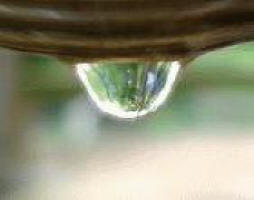 Europe: New electronic waste rules implemented
Europe: New electronic waste rules implemented
New rules on the collection and treatment of e-waste (waste electrical and electronic equipment — WEEE) came into force last month.
The revamped directive sets a collection target of 45% of electronic equipment sold, applicable from 2016. By 2019, the collection target will rise to 65% of equipment sold or 85% of electronic waste generated. Member states will be able to choose which one of these two ways to measure the target.
From 2018, the directive will be extended from its current restricted scope to all categories of electronic waste, subject to an impact assessment beforehand.
Environment Commissioner Janez Potočnik said: “In these times of economic turmoil and rising prices for raw materials, resource efficiency is where environmental benefits and innovative growth opportunities come together.
“We now need to open new collection channels for electronic waste and improve the effectiveness of existing ones. I encourage the Member States to meet these new targets before the formal deadline.”
The directive also includes measures to reduce red tape including the harmonisation of national registration and reporting requirements. Member states’ registers for producers of e-waste will be aligned more closely.
Countries now also have more powers to combat the illegal export of waste more effectively. The new Directive makes it a requirement for exporters to test whether equipment works or not, and provide documents on the nature of shipments that are suspected to be illegal.
The new directive is a response to the figures that show that currently only one third of electrical and electronic waste in the EU is separately collected within the documented system.
The existing EU collection target is 4kg of WEEE per capita, representing about 2m tonnes per year, out of a total of about 10 million tonnes of WEEE generated annually. By 2020, it is estimated that the volume of WEEE will increase to 12m tonnes.
The directive’s final target of 85% of all WEEE generated will mean that in 2020 around 10m tonnes, or roughly 20kg per capita, will be collected in the EU.
--
Recast of the WEEE Directive
Status of the recast process
- The new WEEE Directive 2012/19/EU has been published in issue L197 of the Official Journal on 24 July 2012.
- The Council has on 7 June adopted the new Directive. The next step is now publication in the Official Journal, which is expected to take place this summer.
- The Commission has adopted a Communication on the second reading. It is available here as COM(2012)139.
- The European Parliament adopted a compromise text in its second reading legislative resolution of 19 January 2012.
- The Commission has adopted a Communication on the first reading. It is available here.
- The Council adopted the Common Position on 19 July 2011. It is available here.
- The European Parliament voted in first reading on 3 February 2011. More information.
EU legislation restricting the use of hazardous substances in electrical and electronic equipment (Directive 2002/95/EC) and promoting the collection and recycling of such equipment (Directive 2002/96/EC) has been in force since February 2003. The legislation provides for the creation of collection schemes where consumers return their used e-waste free of charge. The objective of these schemes is to increase the recycling and/or re-use of such products. It also requires heavy metals such as lead, mercury, cadmium, and hexavalent chromium and flame retardants such as polybrominated biphenyls (PBB) or polybrominated diphenyl ethers (PBDE) to be substituted by safer alternatives.
Despite such rules on collection and recycling only one third of electrical and electronic waste in the European Union is reported as separately collected and appropriately treated. A part of the other two thirds is potentially still going to landfills and to sub-standard treatment sites in or outside the European Union. The collection target of 4 kg per person per year does not properly reflect the amount of WEEE arising in individual Member States. Illegal trade of electrical and electronic waste to non-EU countries continues to be identified at EU borders.
Inadequately treated e-waste poses environmental and health risks. In December 2008, the European Commission therefore proposed to revise the directives on electrical and electronic equipment in order to tackle the fast increasing waste stream of such products. The aim is to increase the amount of e-waste that is appropriately treated and to reduce the volume that goes to disposal. The proposals also aim to reduce administrative burdens and ensure coherency with newer policies and legislation covering, for example, chemicals and the new legislative framework for the marketing of products in the European Union.
The Commission proposes to set mandatory collection targets equal to 65% of the average weight of electrical and electronic equipment placed on the market over the two previous years in each Member State. The recycling and recovery targets of such equipment would cover the re-use of whole appliances and weight-base targets would increase by 5%. Targets are proposed also for the recovery of medical devices.
Member States with a high consumption of electrical and electronic equipment would have more ambitious collection targets under the new directive, while others with lower consumption levels would have targets that are appropriately adapted.
Documents:
- Press release on the proposed revised WEEE and RoHS directive (Dec 2008)
- Proposal for a revised directive on waste electrical and electronic equipment (Dec 2008)
- Impact assessment on the proposed directive on waste electrical and electronic equipment (Dec 2008)
- Summary of the impact assessment on WEEE (Dec 2008)
-
Questions and answers on the WEEE proposal (Dec 2008)
| Contact information | n/a |
|---|---|
| News type | Inbrief |
| File link |
http://ec.europa.eu/environment/waste/weee/index_en.htm |
| Source of information | EEP |
| Keyword(s) | waste |
| Subject(s) | NATURAL MEDIUM , PREVENTION AND NUISANCES POLLUTION , RIGHT , RISKS AND CLIMATOLOGY |
| Relation | http://eur-lex.europa.eu/JOHtml.do?uri=OJ:L:2012:197:SOM:EN:HTML |
| Geographical coverage | n/a |
| News date | 05/09/2012 |
| Working language(s) | ENGLISH |
 you are not logged in
you are not logged in





